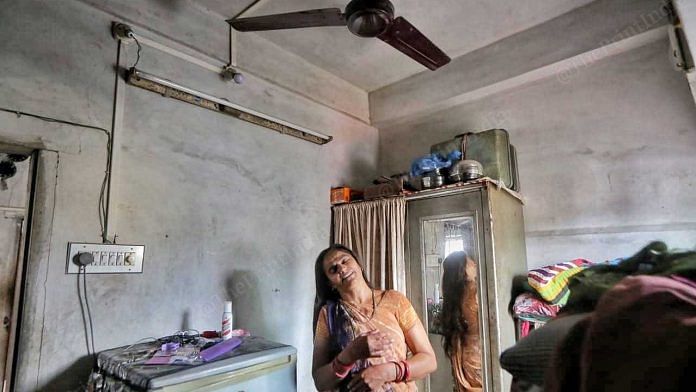Surat: Diamond polisher Vinu Moradiya, his wife, and two of their four children chose to end their lives near a canal in Surat. A spate of suicides in Surat’s diamond industry over the last two months has put everyone on edge.
From Moscow to New York, Belgium to Beijing, diamonds and Surat go hand in hand. But all is not well in western Gujarat’s bustling underbelly of the gemstone industry where nearly seven lakh workers cut and polish 80 per cent of the world’s diamonds.
The Moradiya family suicide on 7 June is a footnote in a tragedy that has been unfolding in Surat since 2018. It is now reaching a crescendo against the backdrop of a growing laboratory diamond industry, a slump in demand for cut and polished diamonds, the Russia-Ukraine war, geopolitical tensions, trade wars, and currency fluctuations. At least eight such incidents of alleged suicides have been reported in this diamond city between April and the first week of June this year.
But nobody in the city wants to connect the dots — police, officials, and diamond bosses blame depression, debt, and domestic problems. No one dares utter the truth about the slump in the industry and layoffs.
On the day Vinu and his family allegedly consumed poison near a canal, another diamond worker reportedly attempted to take his life at a bridge over the Tapi River, and a few days later, the police registered a third suicide case.
No data directly link the deaths to the diamond processing industry in this season of layoffs and salary cuts. While the immediate triggers of these suicides may vary, all the victims were workers in Surat’s diamond industry.
And now, the latest round of G7 sanctions on Russian diamonds is expected to further affect trade in India. Russian mining company Alrosa accounts for 30 per cent of the world’s rough diamonds. They are smaller in size but make up 40 per cent of India’s diamond trade in volume.
“Wait for better times,” Vinu’s cousin Praveen had urged him hours before the Moradiyas reportedly consumed the fatal aluminium phosphide tablets. A passerby saw the family lying unconscious near the canal and raised the alarm. Vinu’s wife Shardaben, 45, was declared dead at the hospital. Their son Krish, 20, and a younger daughter died a few hours later. Fifty-year-old Vinu passed away the next day. The remaining two children of the couple, who were not at home are attempting to make sense of the tragedy.
“He had earlier been earning Rs 25,000, but due to mandi (market slump) his income reduced to Rs 15,000,” says Praveen, who is also a diamond polisher or ratnakalakar. His nieces stopped attending college and instead took on tailoring jobs to make ends meet. It still isn’t enough.
Bhavesh Tank, vice-president of the Gujarat Diamond Workers’ Union (GDWU), estimates that nearly 15,000 workers in Surat have been laid off in the past four months. However, there are no official records, as most of the labourers are neither permanent nor registered employees on the payroll.
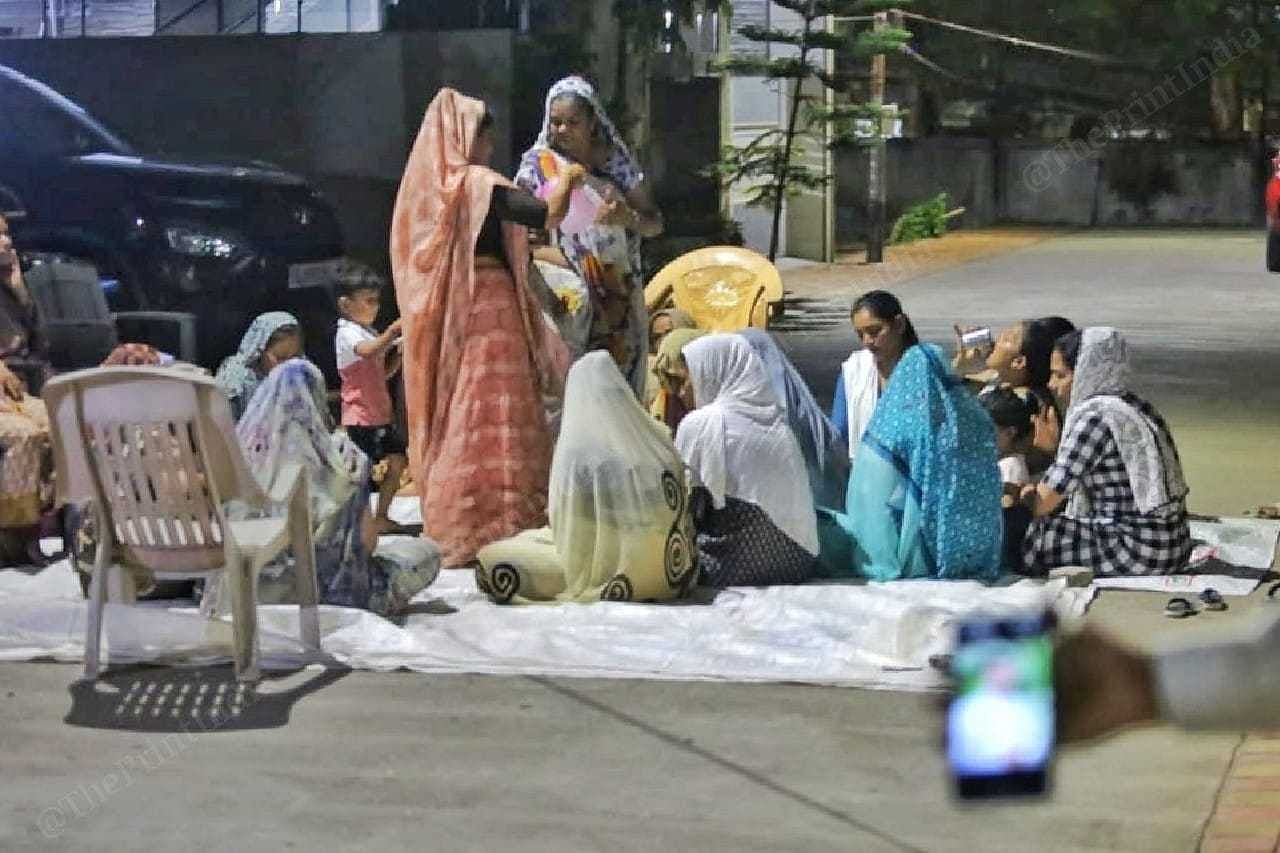
Suicide epidemic
Praveen’s hands are nicked with cuts and scars from injuries long healed after years of polishing diamonds.
“Our seths have warned us not to tell anyone about the slump, layoffs, and suicides. They have threatened us to be aware of what we tell the media,” he says.
Praveen works in Surat’s Mini Bazar, where Vinu used to work too. The warren of lanes is home to more than 5,000 unnamed small diamond polishing and cutting units, as well as nearly 500 larger companies, which alone have a turnover ranging from anywhere between Rs 100 crore to Rs 10,000 crore, people from the industry said.
Surat’s reputation across the world is built on the backs of lakhs of diamond workers who toil day in and day out, refining diamonds for the wealthy. These ratnakalakars form the rank and file of this glittering industry and come in droves from all over India, allured by the glamour and greatness of the industry.
During the 2008-2009 global recession, big companies and their owners took care of their employees but that has diminished now, explains Kiran Desai, a retired professor at the Centre for Social Studies, Surat. “The caste card came into play,” he said, highlighting how most of the workers, like the merchants, were Patels from Saurashtra.
Since then, workers from other regions—Maharashtra, Uttar Pradesh, Bihar—started migrating to and working in Surat. And as the industry expanded, “the community connection between workers and industrialists faded, and interpersonal relationships have been diluted,” Desai added.
Diamond processing in Surat has grown into such a large industry that once-valued ratnakalakars are now replaceable cogs in a giant wheel. Laid-off workers can’t find other jobs or secure good wages. “This has led to workers’ deteriorating mental health, and they suffer from bouts of depressive episodes,” Desai adds.
The Moradiyas had left their hometown Bhavnagar two decades ago for Surat. And in these years, Vinu worked for 10 to 13 hours, his eyes glued to a magnifying glass as he polished the rocks.
Polishing and cutting are the only skills most workers possess, having dropped out of school at age 13 or 14. They are paid anywhere between Rs 6 and Rs 30 per small diamond they polish. For larger stones that can command a market rate between Rs 50,000 and Rs 4 lakh, workers earn Rs 600-1,800; the process can take hours/days.
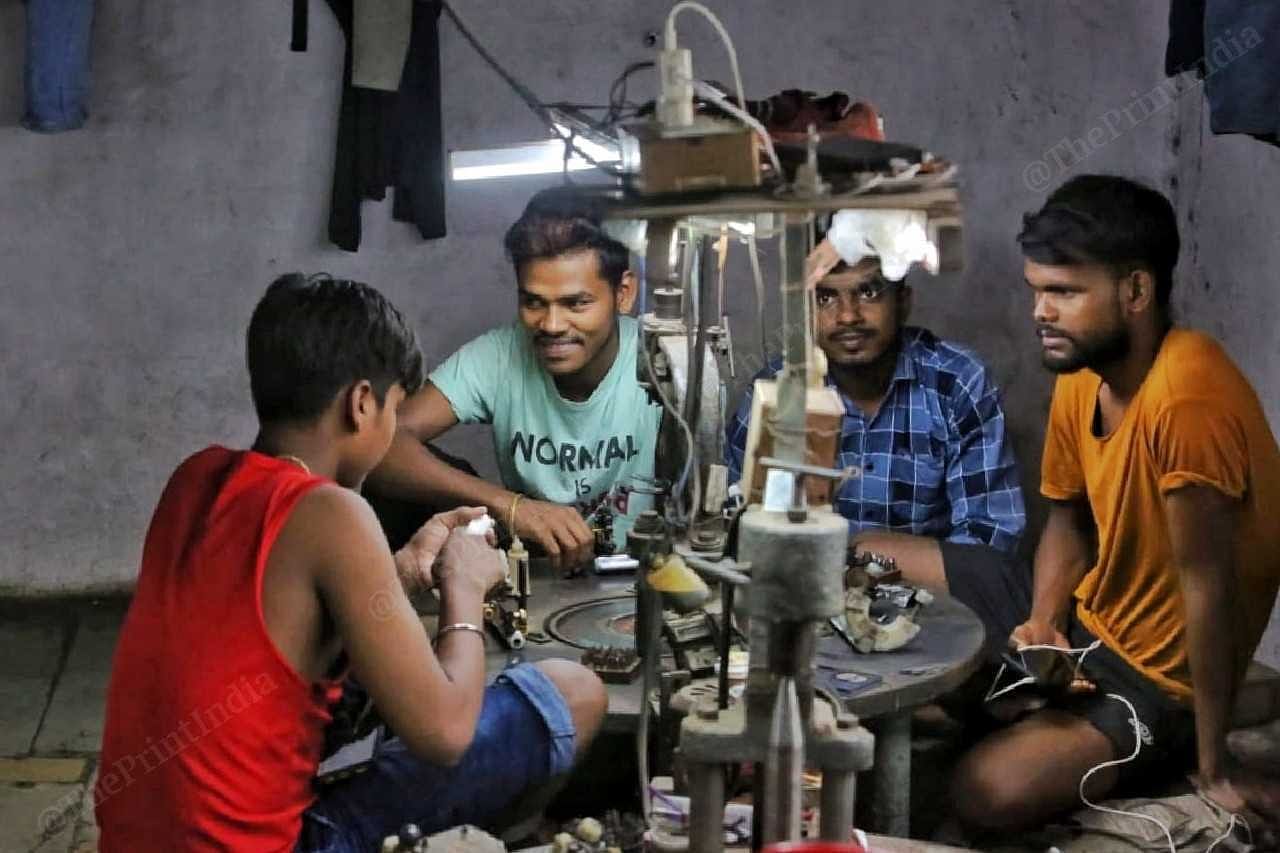
In most cases, diamond polishing is a generational occupation. Fathers and uncles pass the skill to the next generation. Any slump or slowdown cuts a swathe of devastation across extended families.
Like his father, Pravin Sarvaiya, 54, was a diamond polisher. He moved to Surat from Amroli in the Saurashtra region 30 years ago to carry on the family tradition. The industry was booming, and the future seemed as bright as the precious stones the family handled every day.
“Papa didn’t know how to do anything else,” says his 19-year-old daughter Heena. On 25 April 2023, while his family slept, Pravin went to the terrace of their two-room apartment in the Katargam neighbourhood of Surat and hanged himself. He had lost his job six months ago.
“He would often cry at night, telling me that the industry has sucked his blood. He was losing his mind. He had spent all his life polishing diamonds,” says his wife, Parvaben.
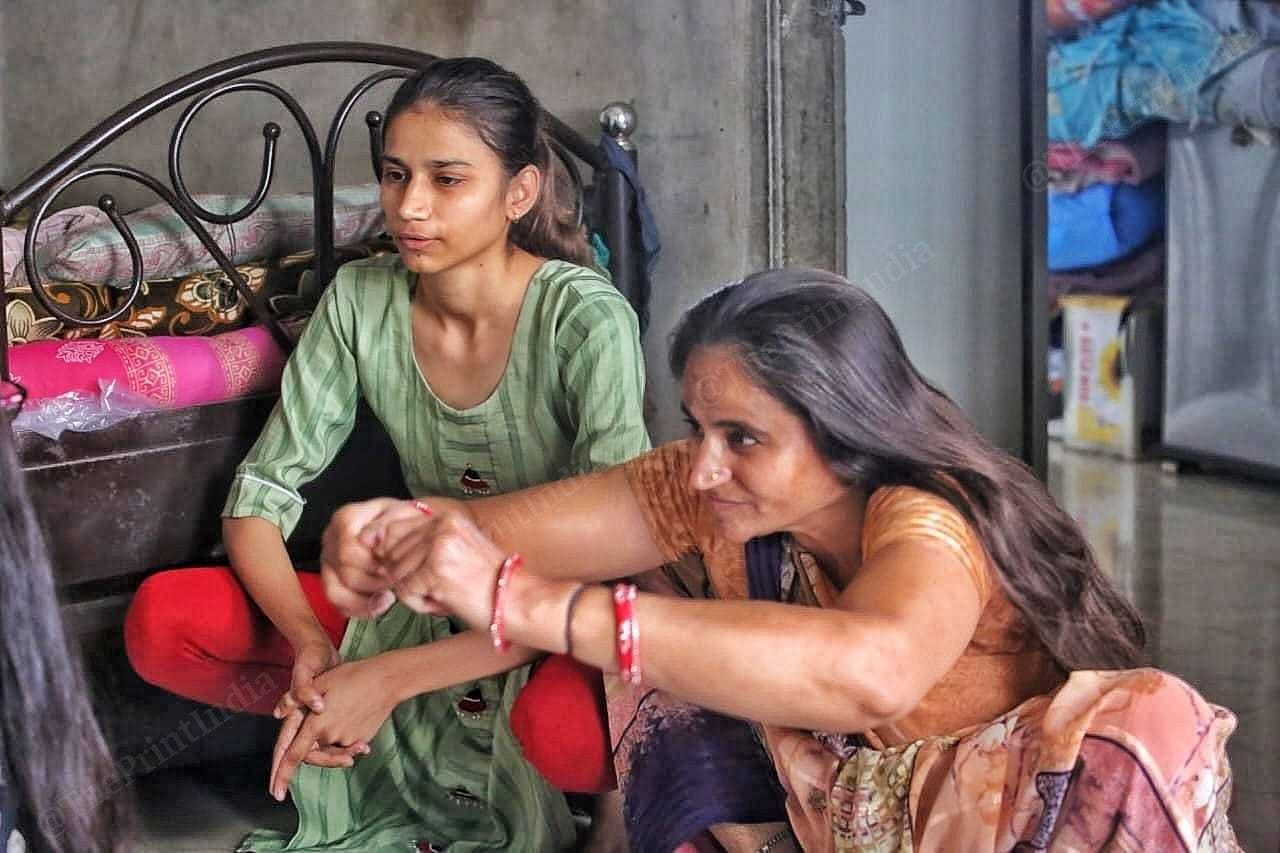
When police investigate these deaths, they often find families where members are at odds with each other, scarred by animosity, abuse, and addiction. Unemployment, reduced wages, and mounting debt are at the root of this discord. But for the most part, neither the police nor merchants think that the suicides are alarming or linked to layoffs or meagre salaries. They blame “lifestyle and loans” instead.
“These workers are debt ridden. They don’t keep enough savings and lead a luxurious lifestyle as compared to their income, so when they are out of jobs, they can’t survive for even two months,” a merchant said, not willing to give his name. Police officers in Surat that ThePrint spoke to also claimed debt from loans as the main cause of the financial crisis among polishers.
Paresh Mahadik, 40, died by suicide on 11 June when his wife and children were not at home. He had been polishing diamonds for 15 years but was laid off around three months ago.
“He constantly clashed with his wife. It remains unclear as to why exactly he took the extreme step. But the probe has revealed that he was distressed as he was unemployed,” says an investigating officer from the jurisdictional Varachha police station. Paresh’s son, who didn’t want to be named, also corroborated that his father was out of work before he died.
Also read: At least 3 lakh Surat diamond workers sent on ‘vacation’, but reality isn’t as sparkly as it sounds
Loss of pay
Only three people are currently employed at the small processing ‘factory’ in Mini Bazar where Vinu worked. It’s a dingy room in a larger apartment filled with similar units independent of each other.
The owner of the unit, diamond merchant Jitu, insists that they are doing everything to mitigate the effect of the downturn on staff.
“The diamond industry is in a slump, but merchants don’t harass workers. We haven’t laid off workers; we have only reduced their hours. If they worked from 8 am to 8 pm earlier, we now only make them work from 10 am till 6 pm,” Jitu says.
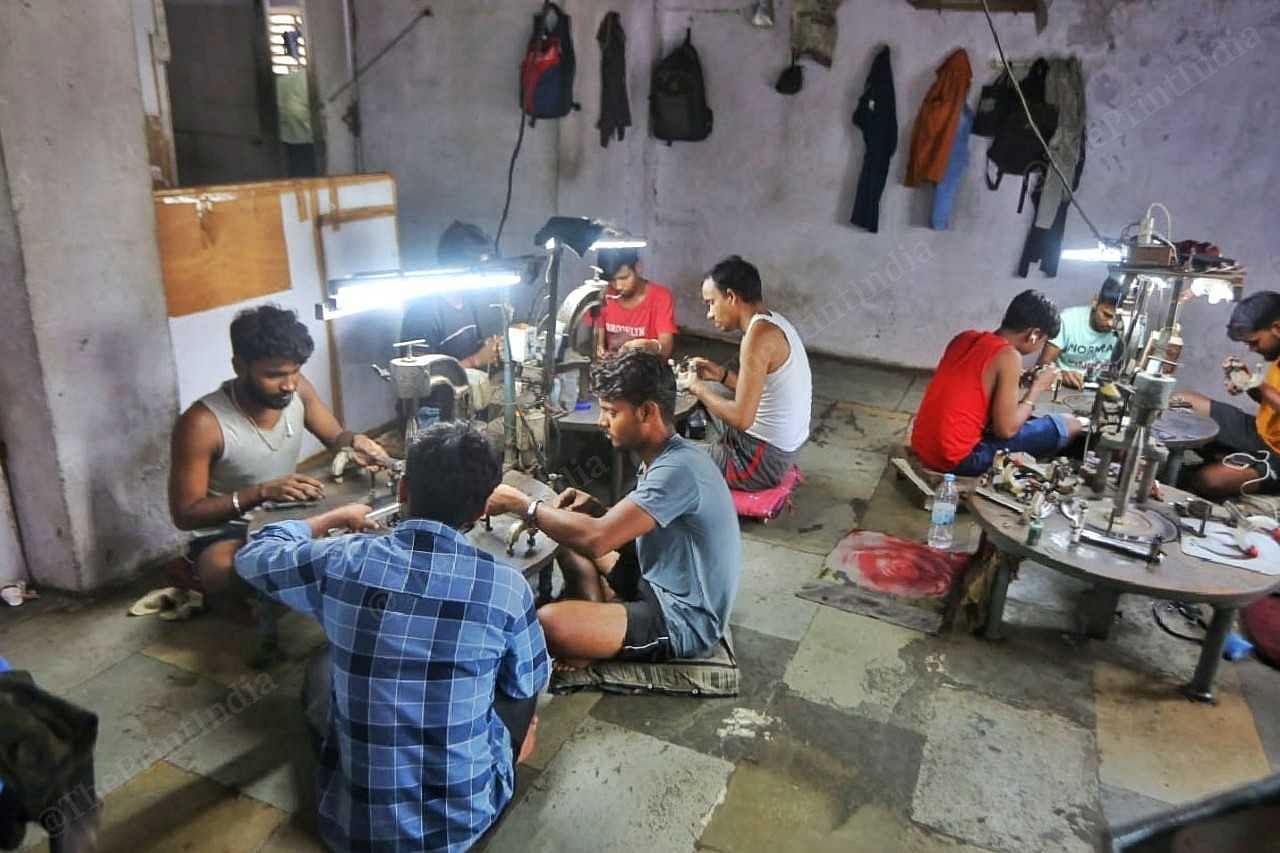
For the ratnakalakars, who are daily wage workers, reduced hours mean lower wages.
“If they were earning Rs 25,000 earlier, the amounts come down to Rs 14,000-15,000,” says Kalpesh, manager of Atmanand Diamond Company. When they can no longer cut corners, families start taking loans for school fees, rent, and other necessary expenses.
Ramji, who works under Jitu, holds an uncut stone — a quarter of the size of his fingernail—in his palm. After running its edges on his palm, he sets it in the polishing machine. There is no air conditioning in the factory room. The sweat on his forehead drips down his face to his chin as he starts the process. It will take him at least four hours to make it sparkle.
Ramji earns less than Rs 20,000 a month; his salary has been halved in just four months, he claims.
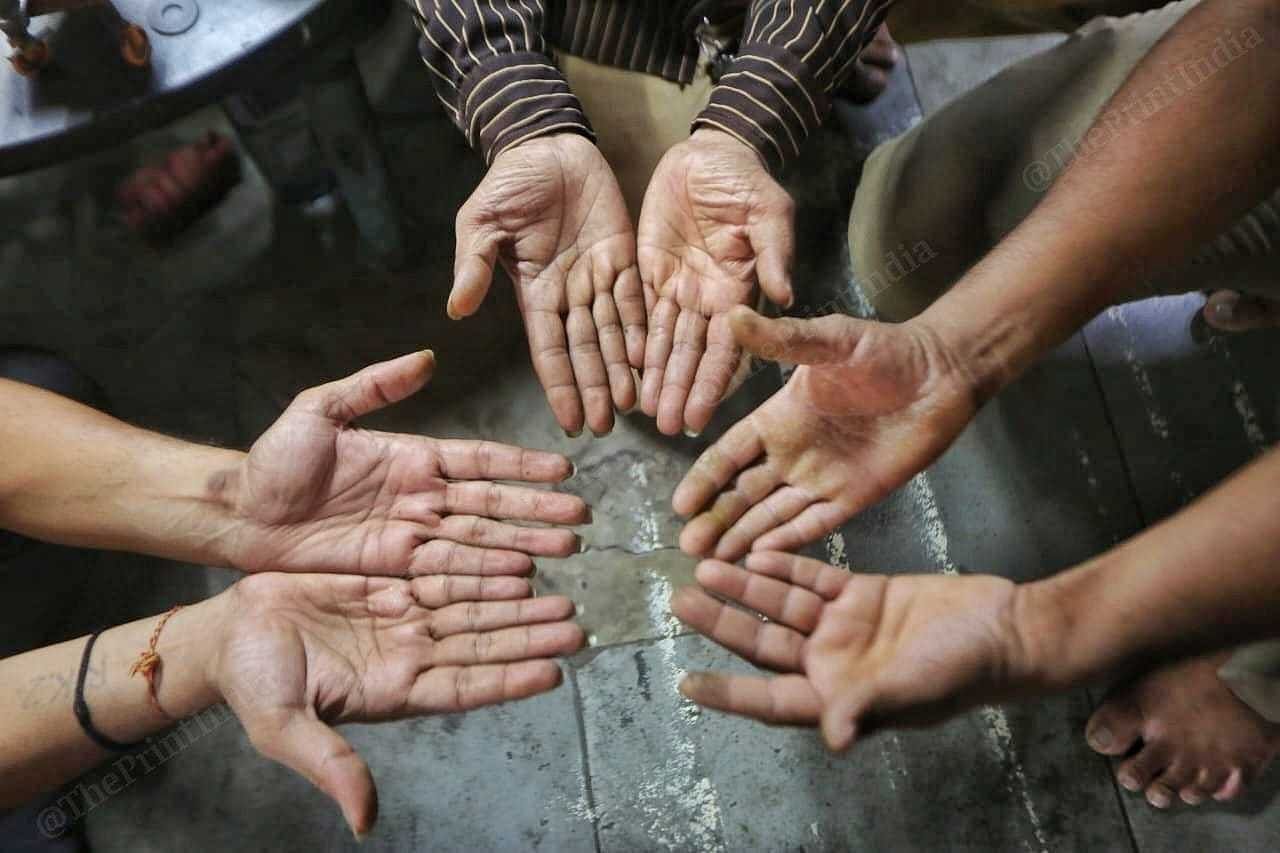
Praveen finds himself in a similar situation. He still has a job, but his monthly wages have dropped from Rs 25,000 to Rs 14,000. “The annual school fees for my two kids come down to Rs 40,000. With the slump, I have had to borrow money to pay for food, electricity, and education,” he says.
Calls for fixed wages have been rejected. “One has to understand that this is a skill and speed-based industry. It doesn’t run on fixed salaries,” argues Dinesh Navadia, president of the Indian Diamond Institute (sponsored by the Ministry of Commerce), Surat, and former regional president of the Gem and Jewellery Export Promotion Council.
Larger established companies have some workers on payroll as permanent employees, but most polishers continue to remain part of the unorganised wages labour sector. They are temporary workers who can be fired if the merchant is unhappy with the quality of work. Millions of dollars are at stake.
“If they don’t put in hard work and their skills are not up to date, the factory owners will fire them. If they come for one day and don’t come for two days, they will get fired just like any other employee. It happens across all sectors,” says a merchant.
Union leaders like Tank, however, argue that companies do this to avoid paying provident funds and gratuity.
Merchants are increasingly allowing ‘vacations’, another cost-cutting measure where workers are put on furlough without pay. The brewing frustration spilled over to Surat streets in May 2023 when more than 300 workers at a diamond polishing and cutting factory started demanding salary hikes and vacation pay after the owners announced a summer vacation from 5 to 28 May.
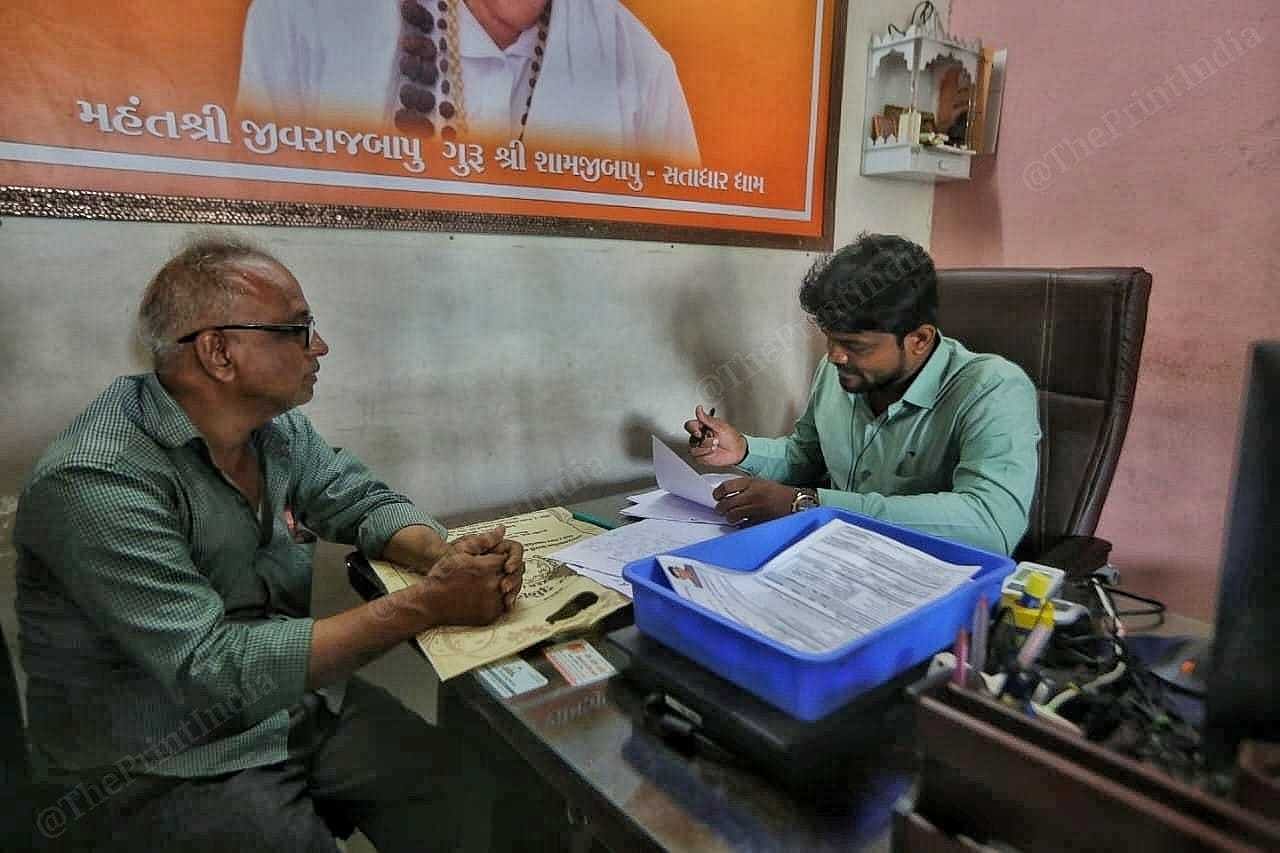
Tank intervened, hammered out a compromise, and the strike was called off. But every day, hundreds of disgruntled and dejected workers knock on the doors of his office in the heart of Surat. Here, Ashok Atma Ram Patil waits for his turn. He was laid off on 1 June by his merchant—with whom he had spent 16 years working—with no compensation, along with 50 other people.
The trade union gave each of them a compensation of Rs 30,000. As workers line up to talk to leaders, Tank combs through files and paperwork, looking for records.
“The merchants sit in shiny offices [and] AC rooms, and here, these workers don’t even have basic necessities like proper toilets,” he says before turning his attention to the pile of forms of polishers who have lost their jobs.
Also read: Lab-diamond boom divides Surat. ‘If everyone had Kohinoor, would it still have value?’
Rise of synthetic diamonds
For decades, rough-cut diamonds worth millions of dollars have come to Surat from Belgium, Russia, and African countries. Then, they are cut, polished, and exported to the United Arab Emirates, the United States, and other countries. Now, this order is shifting.
The demand for India’s polished diamonds has reduced to the extent that in the last five years, losses have increased from one per cent to 15-20 per cent annually, say merchants.
And it’s the lab-grown diamonds that worry them, becoming a permanent fixture in the industry.
Shailesh Narola, who ran a diamond (rough cut) polishing company called Shri Ratnam earlier, recently shifted to synthetic diamonds after incurring huge losses.
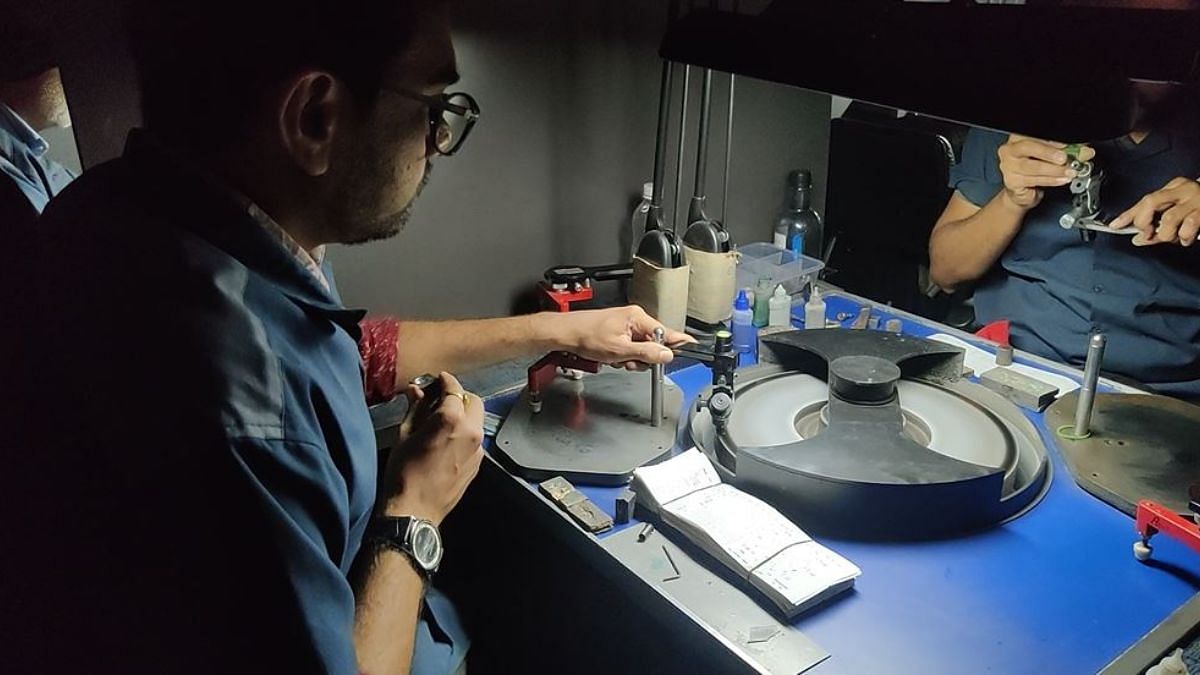
“Most prefer a CVD diamond (another name for lab-grown diamonds) because you can get it starting at Rs 25,000, while an original rock will cost you somewhere around Rs 2 lakh,” Narola says. Instead of 250 workers, he now employs only 50 workers. It’s cheaper and more profitable. However, he also claimed that around 20 members of his previous staff have been trained at his new venture to produce synthetic diamonds.
“Three percent of the world’s population buys diamonds, and now, 30 percent of it has shifted to lab grown ones,” adds Narola.
Prime Minister Narendra Modi inadvertently became its biggest brand ambassador when he gifted United States First Lady Jill Biden with a 7.5-carat lab-grown diamond on 21 June. It is winning over fans around the world.
But not all merchants and ratnakalakars of Surat can compete with it.
(Edited by Humra Laeeq)


